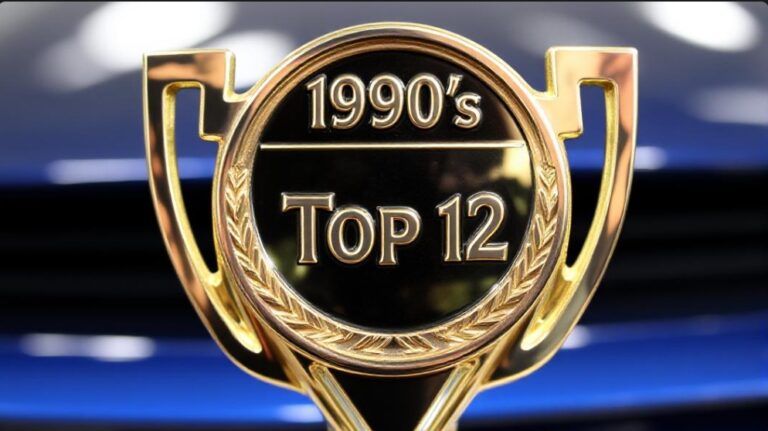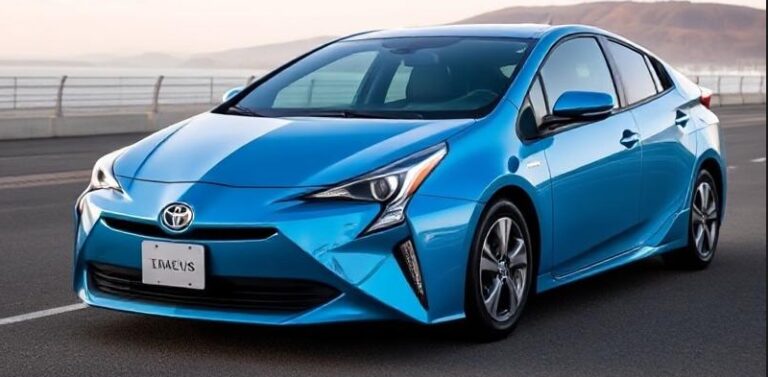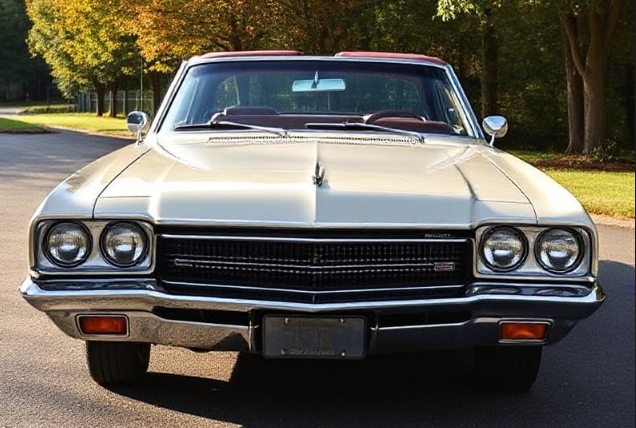From Camry’s Cousin to Coupe King: The Evolution of the Toyota Solara
For many, the Toyota Camry represents the epitome of sensible, reliable transportation. It’s a car that prioritizes practicality, comfort, and fuel efficiency above all else. However, for a period in automotive history, Toyota decided to explore a more spirited, stylish sibling to this ubiquitous sedan. This offspring, the Toyota Solara, carved out its own niche, offering a coupe and convertible experience with the inherent dependability that Toyota is renowned for. From its inception in the late 1990s to its eventual discontinuation, the Solara underwent a significant evolution, transforming from a sleek coupe derived from the Camry to a more distinct and powerful contender.
The Genesis: First Generation (1999-2003) – A Stylish Camry Reimagined
The Toyota Solara was born out of a desire to inject more emotion and personal style into Toyota’s already successful mid-size offerings. Launched for the 1999 model year, it was, in essence, a re-skinned and redesigned coupe version of the popular XV20 generation Toyota Camry. This connection was deliberate, aiming to leverage the Camry’s established reputation for reliability and quality while offering a more visually appealing package for a younger demographic or those seeking something beyond a traditional sedan.
Initially, the Solara was offered in two distinct body styles: a two-door coupe and a four-door convertible. The convertible, in particular, was a significant addition, providing a taste of open-air driving with the practicality of a Toyota. It was one of the few four-door convertibles on the market at the time.
.

.
Model and Trim Levels (First Generation):
The first generation Solara was primarily offered in two main trim levels:
- SE: This was the entry-level model, focusing on providing a good balance of features and affordability. Standard equipment on the SE typically included power windows, power door locks, air conditioning, a tilt steering wheel, and a basic AM/FM/CD stereo system.
- SLE: The SLE (Special Luxury Edition) elevated the Solara’s comfort and convenience. It typically added features such as alloy wheels, cruise control, a power driver’s seat, upgraded interior trim, and often a more premium sound system. Leather upholstery was usually an option on the SLE.
Powertrain Options (First Generation):
The first-generation Solara offered two engine choices, both shared with its Camry brethren:
- 2.2L 4-Cylinder Engine: This engine provided adequate power for everyday driving, prioritizing fuel efficiency.
- 3.0L V6 Engine: For those seeking more spirited performance, the V6 engine offered a significant boost in horsepower and torque, making the Solara a more engaging car to drive.
Both engines were typically paired with either a 4-speed automatic transmission or a 5-speed manual transmission, catering to different driver preferences.
The styling of the first-generation Solara was a clear departure from the Camry. It featured a more sculpted body, a raked windshield, and a flowing roofline that gave it a sportier silhouette. The front and rear fascias were also unique, with distinct headlights, taillights, and grille designs that differentiated it from its sedan counterpart. Inside, while sharing some components with the Camry, the Solara often boasted sportier seats and interior accents to reinforce its more youthful appeal.
Despite its stylish looks and Toyota’s legendary reliability, the first-generation Solara faced a crucial challenge: its strong resemblance to the Camry, especially from a side profile. While intentional, some critics felt it didn’t offer a bold enough departure, and its convertible, while unique, was sometimes criticized for its less-than-perfect structural rigidity.
The Refresh: Second Generation (2004-2008) – A More Distinct Identity and Enhanced Performance
Recognizing the need for greater differentiation and a more potent offering, Toyota significantly redesigned the Solara for the 2004 model year, marking the beginning of its second generation. This redesign aimed to give the Solara a more distinct personality, moving further away from its Camry roots and establishing itself as a more independent model.
The most noticeable change was a complete restyling. The second-generation Solara adopted a more aggressive and aerodynamic design. The coupe featured a sleeker, more muscular profile with a lower roofline and a more pronounced rear end. The convertible, while retaining its four-door configuration, also benefited from a more sculpted and modern aesthetic. The front end was sharper, with projector-beam headlights and a bolder grille, while the rear received a redesigned bumper and taillights.
Beyond aesthetics, the second generation Solara also saw significant mechanical upgrades, particularly in its powertrain options.
Model and Trim Levels (Second Generation):
The trim level structure remained similar, with some enhancements:
- SE: Still the base model, the SE received updated standard features, often including a CD player with MP3 capability, power mirrors, and improved interior materials.
- SLE: The SLE continued to be the more premium offering, adding features like a power sunroof (on the coupe), a JBL premium audio system, leather-trimmed seats, heated front seats, and a more sophisticated climate control system.
Powertrain Options (Second Generation):
This generation saw a significant evolution in the Solara’s engine offerings, with a focus on enhanced performance:
- 2.4L 4-Cylinder Engine: The base engine was upgraded to a more powerful 2.4-liter unit, offering improved responsiveness and still maintaining good fuel economy.
- 3.3L V6 Engine: This was the star of the show for performance enthusiasts. The larger 3.3-liter V6 engine delivered a substantial increase in horsepower and torque, making the Solara a genuinely quick and enjoyable car to drive. This engine option truly set the Solara apart from its more conservatively powered Camry sibling.
Both engines were primarily paired with a 5-speed automatic transmission. While a manual transmission was still available on some 4-cylinder models in the early years of the second generation, it became increasingly rare as the focus shifted towards the automatic.
The interior also received a significant overhaul. The dashboard design was more driver-oriented, with a modern layout and higher-quality materials. Standard features often included a tilt and telescoping steering wheel, steering wheel-mounted audio controls, and a trip computer. The overall ambiance was more upscale and sporty, aligning with the car’s refreshed exterior.
The second-generation Solara also introduced a few new features and options. For example, the convertible top was now power-operated as standard on most models, and safety features like side curtain airbags became more prevalent.
However, despite its improved styling and performance, the automotive landscape was shifting. The rise of more versatile and fuel-efficient crossover SUVs began to eat into the market share of traditional coupes and convertibles. Furthermore, the Solara, while more distinct, still carried the implicit association with the Camry, which sometimes led to it being overlooked by buyers seeking a truly standalone sporty marque.
The Waning Years: Decline and Discontinuation (2004-2008)
While the second-generation Solara represented a significant step forward in terms of design and performance, its sales figures began to tell a different story. The automotive market was increasingly favoring SUVs and more fuel-efficient vehicles. The Solara, a stylish but ultimately niche product, found itself competing in a shrinking segment.
Despite offering a compelling package of Toyota’s renowned reliability, a choice of potent engines, and an attractive design, the Solara’s sales numbers gradually declined throughout the latter half of its second generation. The market was simply moving in a different direction.
Toyota made minor styling updates and feature adjustments in the later model years of the second generation to keep the Solara competitive, but these weren’t enough to reverse the downward trend. The increasing popularity of models like the Scion tC, which offered a more aggressively sporty styling and a more accessible price point, also indirectly impacted the Solara’s appeal.
By 2008, Toyota made the difficult decision to discontinue the Solara. The last model year produced was 2008, bringing an end to the Solara’s decade-long run. The reasons for its discontinuation were multifaceted, including declining sales, evolving consumer preferences, and Toyota’s strategic focus on other segments.
The Solara’s Legacy: A Quiet Chapter in Toyota’s History
The Toyota Solara might not be as celebrated as some of Toyota’s more iconic models, but it holds a unique place in the company’s history. It represented a bold, albeit temporary, experiment in offering a more style-conscious and performance-oriented vehicle within the trusted Toyota brand.
For owners, the Solara offered a compelling combination: the peace of mind that comes with Toyota’s legendary reliability, coupled with a more engaging driving experience and a head-turning design. The convertible version, in particular, provided a more accessible entry into the open-air motoring world, which was a significant draw for many.
While the Solara’s production run was relatively short, its evolution from a stylish Camry cousin to a more distinct and powerful coupe and convertible showcases Toyota’s willingness to adapt and explore different market segments. It’s a reminder that even the most practical automotive giants can venture into more expressive territory, leaving behind a legacy of dependable vehicles with a touch of flair. Today, a well-maintained Solara, especially the V6 models, can still be found as a compelling used car option for those seeking a reliable and stylish coupe or convertible without the premium price tag often associated with such vehicles. The Solara may be gone, but its quiet contribution to Toyota’s diverse automotive tapestry remains.







